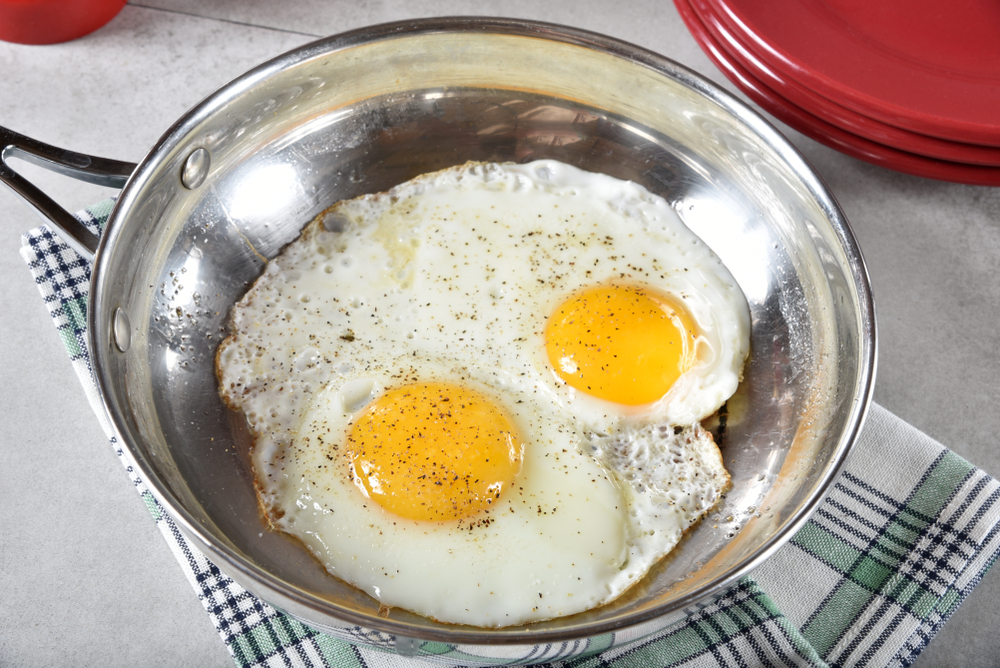Many start the new year with resolutions and good intentions. I try to start a new year with a goal of not breaking the law. I try not to speed, I keep my dogs on their 6-foot leashes and pick up all their treats, I don’t cross the ever-increasing bike lanes when I want to get around that car that is taking FOREVER to make a left-hand turn.
But every year laws change across the country at the city, county, state, and federal level. Here are just a few of the new laws that might make absolute law compliance I little harder.
Nonstick Pans Are Now AGAINST THE LAW!
Like every gen Xer and beyond, I grew up with the world of the kitchen made up entirely of nonstick pans. When I was a child, we called them Teflon™ pans and our mothers and grandmothers cooked lots of food in them with forks that they dragged across them with zeal, adding an extra dusting of seasoning to many an egg. Fast forward to now and all those specks of extra flavor will be no more.
As of January 1, 2025, Minnesota imposed a ban on the sale of cookware containing “intentionally added” per- and polyfluoroalkyl substances (PFAS) or “forever chemicals.” PFAS have been widely used in nonstick cookware coatings, such as to provide nonstick properties. Minnesota took this drastic step as part of an effort to eliminate PFAS from various consumer products in an attempt to reduce introducing more PFASs into the environment and to combat potential health risks. Under the new regulations, any cookware with nonstick coatings containing intentionally added PFAS is now prohibited from sale in Minnesota.
How Minnesota Companies and Minnesotans are Adjusting
In response to the ban, manufacturers are transitioning to PFAS-free alternatives. For example, St. Louis Park, Minnesota -based cookware maker Nordic Ware has proactively eliminated PFAS from its cookware products.
While the ban is on the sale or distribution of nonstick pans, I am going to try to take it a step further and no longer cook with nonstick pans (as recommended by the Star Tribune). According to my research, my options are: cast iron, stainless steel, carbon steel, enameled cast iron, ceramic-coated, or copper pans. I guess I am going shopping for some new pans.
And if you think the ban on nonstick pans is a joke (just head to your local retailer and look for some), consider that Minnesota has the authority to regulate products sold within its borders, including nonstick pans, if there are health or environmental concerns associated with their use. Several states, in addition to Minnesota, have passed legislation restricting or banning PFAS in certain products.
For the Truly Irate Nonstick Pan Users: What Can You Do?
Whether you can sue the state of Minnesota for banning nonstick pans depends on several factors, including the legal grounds for your claim, the specifics of the ban, and your ability to demonstrate harm (my eggs are sticking to the pan!). Here are some key points to consider:
- Legal Basis for the Ban: The state has banned certain nonstick pans due to health or environmental concerns caused by the presence of “forever chemical.” States have the authority to enact laws and regulations to protect public health and the environment.
- Grounds for a Lawsuit:
- Constitutional Claims: You might argue the ban violates your constitutional rights, such as equal protection or due process. However, courts generally give states wide latitude to regulate products for health and safety reasons.
- Economic Harm: If you are a manufacturer, distributor, or seller of nonstick pans, you might claim economic harm due to the ban. However, you’ll need to prove that the ban is arbitrary, discriminatory, or exceeds the state’s authority.
- Standing to Sue: To sue, you must demonstrate standing, which means showing you were directly harmed by the law. For example, if you simply own a nonstick pan, it might be difficult to show significant harm.
- Precedent and Practicality: Similar bans on harmful substances, such as BPA in plastics or lead in paint, have generally been upheld by courts. Lawsuits challenging such regulations often fail unless there is clear evidence of overreach or lack of scientific basis.
From a regular user of nonstick pans, I would not take the bet on trying to overturn the ban on nonstick pans. It really hard to prove that a messed egg is really a harm.
 Adjusting to Life without Nonstick Pans: A Recipe for Success (and Eggs)
Adjusting to Life without Nonstick Pans: A Recipe for Success (and Eggs)
So, if you want to embrace a nonstick pan lifestyle, start with an egg. Here are the steps to cook an egg in a stainless-steel pan:
- Choose the Right Pan
- Use a clean, smooth-bottom stainless-steel pan for even heat distribution.
- Preheat the Pan
- Place the pan over medium heat and allow it to preheat for about 2-3 minutes.
- To test if it’s ready, add a few drops of water. If they form small beads and “dance” around the pan before evaporating, it’s the right temperature.
- Add Fat
- Use oil, butter, or a mix of both. For one egg, about 1-2 teaspoons should suffice.
- Let the fat heat until it shimmers (for oil) or melts and starts to foam (for butter).
- Crack the Egg
- Crack the egg into a small bowl first to ensure no shells get into the pan.
- Gently pour the egg into the center of the pan.
- Cook Without Moving
- Allow the egg to cook undisturbed. For a fried egg, this typically takes 2-3 minutes.
- Reduce the heat slightly if it starts to splatter or brown too quickly.
- Flip (Optional)
- For sunny-side-up, let the egg cook until the whites are fully set and the edges slightly crisp.
- For over-easy or over-medium, gently flip the egg using a spatula and cook for another 20-40 seconds.
- Remove the Egg
- Use a spatula to carefully slide the egg out of the pan onto a plate.
Tips for Success
- Temperature Control: Stainless steel holds heat well, so avoid overheating. Medium or medium-low heat works best.
- Adequate Fat: Ensure there’s enough fat to create a barrier between the egg and the pan.
- Don’t Rush: Allow the egg to naturally release from the pan before trying to move or flip it.
With practice, you’ll master this technique and enjoy perfectly cooked eggs with less forever chemicals!






